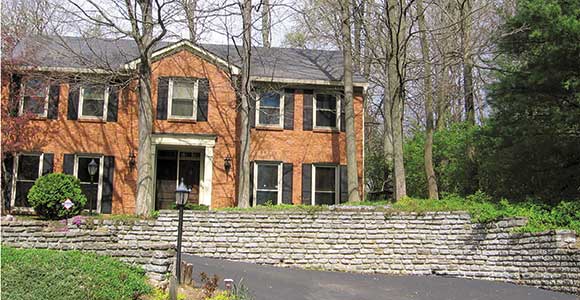Dear Jim: We are landscaping our new house. We like a wooded yard for shade and to enhance the energy efficiency of our home. Where should we plant trees, and which are best? What materials are good alternatives to grass for ground cover? — Mark G.
Dear Mark: Wise landscaping can do more than just create an attractive yard. It can also lower your utility bills in the summer and winter and improve your family’s comfort year-round. Trees, being one of the key components of any residential landscaping design, can have the greatest affect on your utility bills.
For one, the evaporation of moisture from the leaves on trees actually cools the air temperature around your home, akin to how perspiration cools your skin.
By taking advantage of passive solar heating during winter with the proper placement and selection of trees, you can use less electricity to heat your home.
The primary goal of efficient landscaping with trees is to shade your home during summer, yet allow the sun to pass through during winter. Additional goals are, depending upon your climate, to allow cool evening breezes to flow around your house or to provide moisture for evaporative cooling of the air near your house.
Before you start, check with a local landscaper to determine your temperature zone, which refers to the minimum winter temperature range. For warm climates in Zone 10, the range is 30 degrees to 40 degrees . For cold climates in Zone 1, the range is negative 30 degrees to negative 40 degrees. If you select species of trees that thrive in a climate more than one or two zones outside your range, they may not do well and may require excessive care.
In an average temperate climate, a typical efficient tree landscaping plan has deciduous trees to the south, southeast and southwest. The leaves block the sun during summer, but when the leaves fall during winter, the sun shines through to heat your home. Leave a small gap to the southwest to allow cooler evening breezes to flow through.
Plant dense evergreens along the north, northeast and northwest sides, which block the cold winter winds. With shorter days and the sun lower in the sky during winter, not much solar heat comes from these directions.
In hot, humid climates, shading during summer is most important. Taller trees should be planted closer to your home to block the sun, which is higher in the sky. Leaving a gap for breezes is not as important.
There are alternatives to grass such as ground cover plants and gravel. Both have their advantages and disadvantages for landscaping a house. The benefits of either depend on your climate, house and yard. Even in the same neighborhood, what is good for one house may not be efficient for another.
Low-growing ground cover near your house can help to keep it cool during summer. The leaves block the sun’s heat from absorbing into the ground, and they give off moisture for natural cooling. Ground cover has a lesser impact on efficiency during winter.
The cooling effect from ground cover is most effective in drier climates because there is more evaporation. In hot, humid climates, the additional moisture from plants near the house will further increase the relative humidity level. This is more of a problem if you rely on natural ventilation than when air-conditioning with the windows closed.
Landscaping with gravel eliminates the need to water grass, but it can increase the air temperature around your house, particularly in the evening. The thermal mass of the gravel stores the afternoon sun’s heat, which helps in the winter. If you use gravel, make sure it’s shaded by deciduous trees during the summer.
A good location for ground cover is between an asphalt or cement driveway or walkway and the sunny side of your house. Not only does the driveway get hot and hold the heat, but it re-radiates the heat up to your house. Planting taller ground cover between the driveway and your house walls can block some of this heat.

Have a question for Jim?
Send inquiries to
James Dulley
The Tennessee Magazine
6906 Royalgreen Drive
Cincinnati, OH 45244
or visit www.dulley.com.







